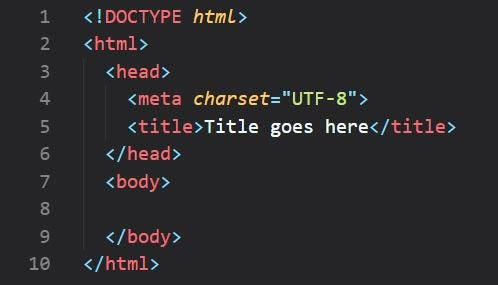SOFTWARE ENGINEERING JOURNEY:MODULE 1 AND 2
Software engineering has evolved rapidly over the years, with an abundance of powerful tools and frameworks that streamlines development processes and allow developers to build complex applications. This article explores the core technologies that have shaped modern web and mobile development which includes: GitHub, HTML, CSS, JavaScript, React, React Native and Expo. GitHub:Collaboration and Version Control This is a platform that revolutionized version control and collaboration. Built on top of Git, it allows developers to store code, track changes, and collaborate with teams across the world. GitHub provides an easy interface for branching, merging, and reviewing code, making teamwork more efficient. It also integrates with continuous integration and continuous deployment (CI/CD) tools, helping automate testing and deployment processes, thus ensuring smooth development workflows. HTML (HyperText Markup Language) HTML is the backbone of every web-page. It provides the structure and content of a web page, defining elements such as headings, paragraphs, links, images, and forms. As the foundation of web development, HTML is essential for creating content and organizing it in a way that browsers can interpret and display to users. While HTML alone cannot create a visually appealing or interactive site, it is the necessary starting point for all web projects. CSS (Cascading Style Sheet) CSS helps to make websites visually appealing, it allows developers to control the layout, color, fonts, and overall presentation of a web-page. By separating the content (HTML) from the design (CSS), developers can ensure that the site looks good across different devices and screen sizes. Responsive design, powered by CSS, ensures websites are optimized for both desktops and mobile devices. JavaScript While HTML and CSS give structure and style, JavaScript brings interactivity to the web. JavaScript is a versatile, dynamic programming language that allows developers to manipulate the DOM and create interactive elements such like drop-downs, forms, and animations. JavaScript is also the foundation for building client-side applications and connecting to APIs. React: Building Interactive UIs It was developed by Facebook and offers a solution by providing a declarative approach to building user interfaces. React allows developers to create reusable components, making code more modular and easier to maintain. It also enables efficient rendering through its virtual DOM, ensuring fast updates to the UI without unnecessary re-renders. React has become the go-to library for building modern, dynamic web applications due to its flexibility and ease to use. React Native: Building Mobile Apps with JavaScript For mobile app development, React Native takes the concepts of React and applies them to iOS and Android applications. Using JavaScript and React components, developers can build cross-platform mobile apps without needing to write separate code-bases for each platform. React Native provides access to native device features, offering a near-native performance experience while maintaining the flexibility of JavaScript development. Expo: Simplifying React Native Development Expo is a framework and platform built on top of React Native that allows developers to build mobile applications without needing to install and configure native code or manage complex build processes. With Expo, developers can promptly run their apps on both Android and iOS devices using the Expo Go app, enabling rapid iteration and testing. Expo also provides pre-built components, APIs, and libraries that speed up development and eliminate the need for native code. It’s an excellent choice for both beginners and experienced developers, as it abstracts away much of the complexity of mobile development while still providing access to powerful features such as push notifications, camera integration, and GPS. Conclusion In software engineering field, GitHub, HTML, CSS, JavaScript, React, React Native, and Expo are essential tools for developers looking to build responsive, interactive, and maintainable web and mobile applications. Each technology plays a crucial role in the development process, from organizing code and collaborating with teams to structuring content, styling, creating interactivity, building modern user interfaces and mobile apps, and simplifying mobile development. Mastering these tools equips developers with the skills to create applications for both web and mobile platforms.

Software engineering has evolved rapidly over the years, with an abundance of powerful tools and frameworks that streamlines development processes and allow developers to build complex applications. This article explores the core technologies that have shaped modern web and mobile development which includes: GitHub, HTML, CSS, JavaScript, React, React Native and Expo.
GitHub:Collaboration and Version Control
This is a platform that revolutionized version control and collaboration. Built on top of Git, it allows developers to store code, track changes, and collaborate with teams across the world. GitHub provides an easy interface for branching, merging, and reviewing code, making teamwork more efficient. It also integrates with continuous integration and continuous deployment (CI/CD) tools, helping automate testing and deployment processes, thus ensuring smooth development workflows.
HTML (HyperText Markup Language)

HTML is the backbone of every web-page. It provides the structure and content of a web page, defining elements such as headings, paragraphs, links, images, and forms. As the foundation of web development, HTML is essential for creating content and organizing it in a way that browsers can interpret and display to users. While HTML alone cannot create a visually appealing or interactive site, it is the necessary starting point for all web projects.
CSS (Cascading Style Sheet)
CSS helps to make websites visually appealing, it allows developers to control the layout, color, fonts, and overall presentation of a web-page. By separating the content (HTML) from the design (CSS), developers can ensure that the site looks good across different devices and screen sizes. Responsive design, powered by CSS, ensures websites are optimized for both desktops and mobile devices.
JavaScript
While HTML and CSS give structure and style, JavaScript brings interactivity to the web. JavaScript is a versatile, dynamic programming language that allows developers to manipulate the DOM and create interactive elements such like drop-downs, forms, and animations. JavaScript is also the foundation for building client-side applications and connecting to APIs.
React: Building Interactive UIs
It was developed by Facebook and offers a solution by providing a declarative approach to building user interfaces. React allows developers to create reusable components, making code more modular and easier to maintain. It also enables efficient rendering through its virtual DOM, ensuring fast updates to the UI without unnecessary re-renders. React has become the go-to library for building modern, dynamic web applications due to its flexibility and ease to use.
React Native: Building Mobile Apps with JavaScript
For mobile app development, React Native takes the concepts of React and applies them to iOS and Android applications. Using JavaScript and React components, developers can build cross-platform mobile apps without needing to write separate code-bases for each platform. React Native provides access to native device features, offering a near-native performance experience while maintaining the flexibility of JavaScript development.
Expo: Simplifying React Native Development
Expo is a framework and platform built on top of React Native that allows developers to build mobile applications without needing to install and configure native code or manage complex build processes. With Expo, developers can promptly run their apps on both Android and iOS devices using the Expo Go app, enabling rapid iteration and testing.
Expo also provides pre-built components, APIs, and libraries that speed up development and eliminate the need for native code. It’s an excellent choice for both beginners and experienced developers, as it abstracts away much of the complexity of mobile development while still providing access to powerful features such as push notifications, camera integration, and GPS.
Conclusion
In software engineering field, GitHub, HTML, CSS, JavaScript, React, React Native, and Expo are essential tools for developers looking to build responsive, interactive, and maintainable web and mobile applications. Each technology plays a crucial role in the development process, from organizing code and collaborating with teams to structuring content, styling, creating interactivity, building modern user interfaces and mobile apps, and simplifying mobile development. Mastering these tools equips developers with the skills to create applications for both web and mobile platforms.









































































































































































![[The AI Show Episode 142]: ChatGPT’s New Image Generator, Studio Ghibli Craze and Backlash, Gemini 2.5, OpenAI Academy, 4o Updates, Vibe Marketing & xAI Acquires X](https://www.marketingaiinstitute.com/hubfs/ep%20142%20cover.png)



























































































































![[FREE EBOOKS] The Kubernetes Bible, The Ultimate Linux Shell Scripting Guide & Four More Best Selling Titles](https://www.javacodegeeks.com/wp-content/uploads/2012/12/jcg-logo.jpg)



![From drop-out to software architect with Jason Lengstorf [Podcast #167]](https://cdn.hashnode.com/res/hashnode/image/upload/v1743796461357/f3d19cd7-e6f5-4d7c-8bfc-eb974bc8da68.png?#)






































































































.png?#)




.jpg?#)
































_Christophe_Coat_Alamy.jpg?#)








































































































![Rapidus in Talks With Apple as It Accelerates Toward 2nm Chip Production [Report]](https://www.iclarified.com/images/news/96937/96937/96937-640.jpg)








































































































































